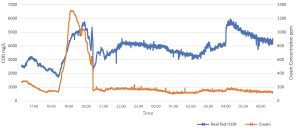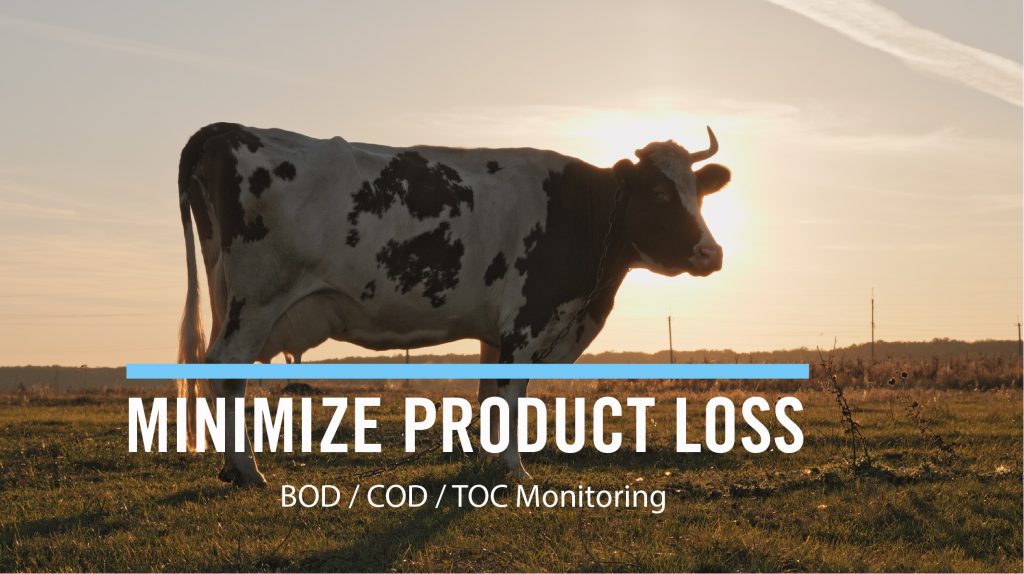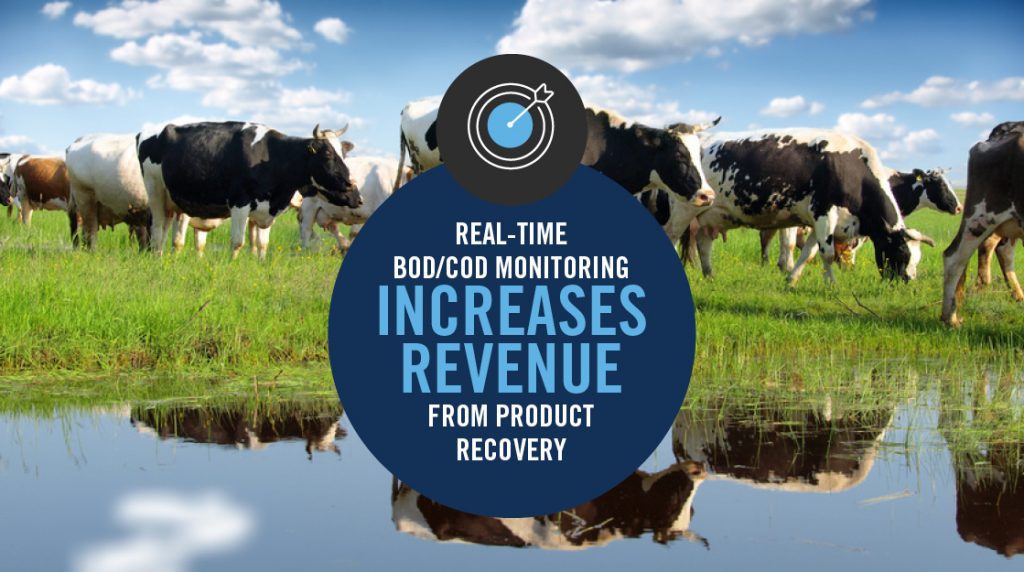Reducing product loss and limiting COD discharge to the municipal sewer system were key goals for a dairy manufacturing plant. The facility looked to Real Tech to help achieve these goals, installing an industrial grade, real-time BOD/COD probe on the effluent of their production plant. The wastewater probe delivered reliable and continuous COD, cream and protein data, in addition to event notification. The water quality data from Real Tech’s probe proved invaluable, enabling the plant to better monitor their effluent and identify cream spills, giving them a new opportunity to optimize production and reduce wastewater surcharges from the municipality.
OVERVIEW
A dairy manufacturer in Canada produces cheese and whey products. Through the transformation of raw milk into these end products, highly organic laden waste streams are generated. The facility discharges their wastewater directly to the municipal sewer system, with no treatment onsite. For this reason, the facility has a discharge permit with the municipality where a surcharge is paid based on the chemical oxygen demand (COD) and fats, oils and grease (FOG) loading in the discharged wastewater.
IMPROVING PRODUCTION EFFICIENCY AND REDUCING COSTS
When the facility initially approached Real Tech, there were two key objectives they were looking to achieve with online water quality monitoring. The first was to gain a greater understanding of their effluent, utilizing the water quality information as a feedback tool to optimize production. By quickly identifying events or spills and monitoring trends, the facility would have the information needed to make sound decisions for process improvements. Greater efficiency and reducing losses would ultimately enable the facility to see revenue gains. Closely related, the second objective for the facility was to reduce COD discharge, thereby minimizing the surcharge costs associated with its wastewater discharge treatment.
REAL-TIME COD EFFLUENT MONITORING
For continuously monitoring COD in untreated dairy wastewater, Real Tech recommended their BA-X series industrial grade titanium BOD/COD probe. The instrument uses light absorbance for measurement as many compounds, including organic matter, absorb light in the ultraviolet (UV), visible (VIS) and near infrared (NIR) regions of the light spectrum. The BA-X series probe is tailored with multiple UV/VIS LEDs specifically selected for BOD and COD detection. The BOD/COD probe is calibrated by comparing the absorbance data to reference lab samples to create a custom calibration for the parameters of choice. Due to inconsistencies in the lab COD results, some of the samples used during the calibration process were sent to two different labs for COD analysis. The results from the two labs diverged as much as 42% with multiple samples showing above 10% difference. Real Tech worked collaboratively with the plant to build a calibration set that reflected the composition changes expected for their wastewater, resulting in reliable and accurate real-time COD monitoring.
CAPTURING SPILLS AND EVENTS
At the facility’s request, the BOD/COD probe was also calibrated for detecting cream and whey protein as these two products constitute an important part of the production and have significance beyond just COD measurements of the wastewater. The multi-dimensional nature of the measurement principle of the probe enables it to detect changes in the composition of organics independently of their concentration. As seen in Figure 1 below, even when the COD values are very close, the composition of the wastewater can be significantly different indicating a spill event or an issue with the manufacturing or treatment systems. This enabled the plant to distinguish cream and whey protein from other high COD events that occurred. This allowed for even further production optimization and revenue recovery opportunities.
Figure 1: COD and Cream Concentration in Real Time
A CLOSE LOOK AT THE COST SAVINGS POTENTIAL IN THE DAIRY INDUSTRY BY REAL-TIME BOD/COD MONITORING
Any dairy facility can benefit from real-time BOD/COD monitoring and achieve cost savings.
Although surcharges vary across different municipalities, over the past 25 years they have significantly increased, in some cases up to ninefold, and are expected to continue increasing in the future. This added cost has made proper wastewater management more important than ever before. How much this affects profitability of a plant can be demonstrated with an example. Consider a plant that processes 645,000 pounds of milk per day. The plant discharges its wastewater in a municipality where the surcharge is 20 cents per pound of BOD. In the best case scenario, where one pound of BOD is discharged per 1,000 pounds of milk processed, the daily surcharge would be $129 and the annual surcharge total would be $32,250. In some plants, the amount of BOD discharged per 1,000 pounds of milk can be as high as 12 pounds and typically 90% of the total waste load comes from milk components that are lost during processing. The opportunity for savings from surcharges can be an astounding $348,300 per year! *
Although it may not be possible to avoid all spills and lost product, the potential for savings from reduced surcharges alone is immense. As the excess waste load mostly reflects product losses during processing, the cost of this lost product must be added to the surcharge to find the true cost creating a significant opportunity for cost savings and a very rapid ROI from the addition of BOD/COD monitoring. For example, as 90% of BOD is typically due to lost milk and a pound of milk generates approximately 0.12 pounds of BOD, at a price point of $0.18 per pound of milk, the cost added from lost product would be between $870 and $10,450 per day.
* Reference: University of California, Davis. Dairy Research & Information Center
CONCLUSION
With confidence in their new Real Tech BOD/COD probe, the dairy plant is now able to continuously monitor their COD discharge along with proteins and cream in the wastewater and rapidly detect events or spills. Production optimization opportunities, increasing revenue and decreasing surcharges are now within reach for the facility, offering a rapid ROI.




